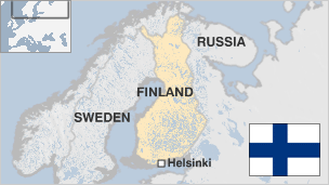
Facts and stats about Finland
Finland is one of the most developed countries in the world. It is situated in Europe with a population of around 5.5 million as of 2013. Most of the country’s populace resides in the southern part of the country where the climate is much warmer.
For several centuries, Finland was under the authority of the monarchy of Sweden. By the 19th century, Russia took over the control, but Finland acquired its independence from the former in the early 1900s. However, Swedish culture and influence is very apparent in the present Finnish schema. In fact, the Swedish language is one of two official languages of the country, the other being Finnish.
The country’s declaration of independence prompted a struggle between the ‘Reds’ and Rightists, supported by Soviet Russia and the German empire, respectively. The Rightists won, but their attempt to establish a monarchy was a failure.
Finland was the only nation able to resist and fend off the Red Army’s invasion after the war. However, the country did lose some of its territory.
Surprisingly, Finland progressed much later than the other developed European countries. Essentially, the country embraced an agrarian-based economy before and during the war. But, in the 1950s, a transition to a more industrial and service-oriented market was begun, which led to Finland’s becoming one of the world’s most advanced economies. Today, the country is ranked as the best country to live in by the Newsweek, based on criteria set by the IMF.
- Agriculture 128
- Background 11
- Conflict 5
- Cost of living 55
- Crime 155
- Culture 34
- Disasters 32
- Economy 2988
- Education 465
- Energy 1406
- Environment 264
- Geography 88
- Government 252
- Health 359
- Import 6
5.27 million
Population. Ranked 116th in 2013.
$46,178.59
GDP per capita. Ranked 13th in 2012.

304,090 sq km
Sq. km. Ranked 68th in 2008.